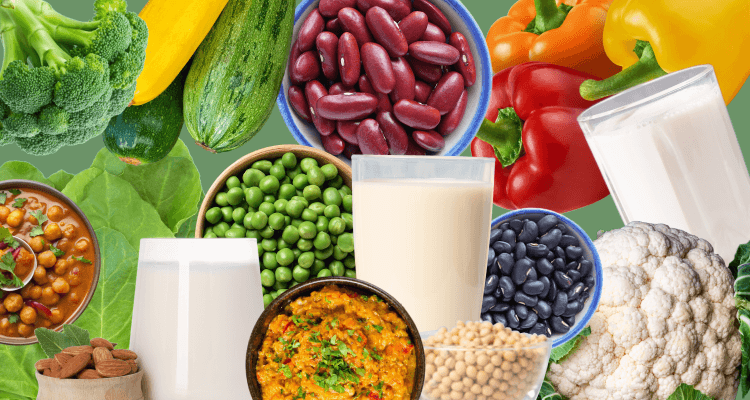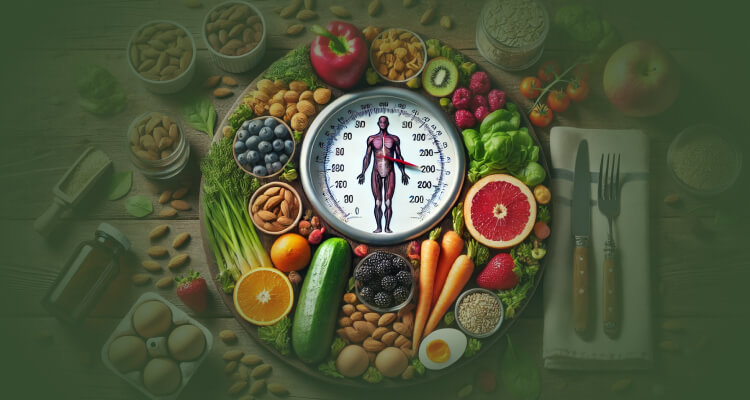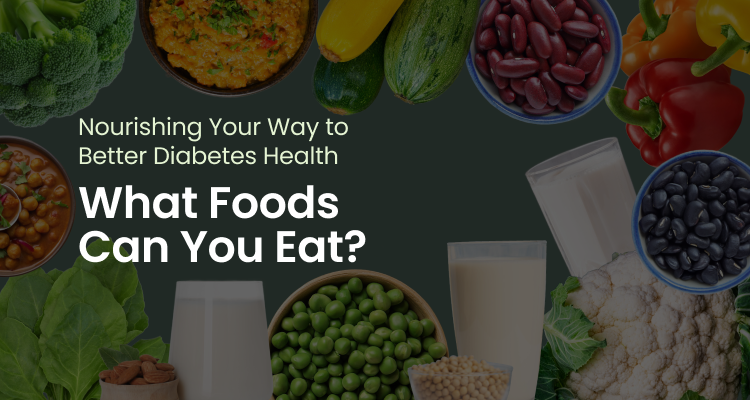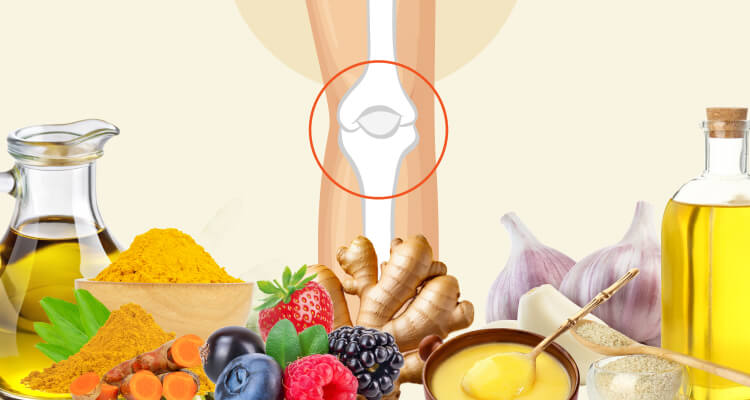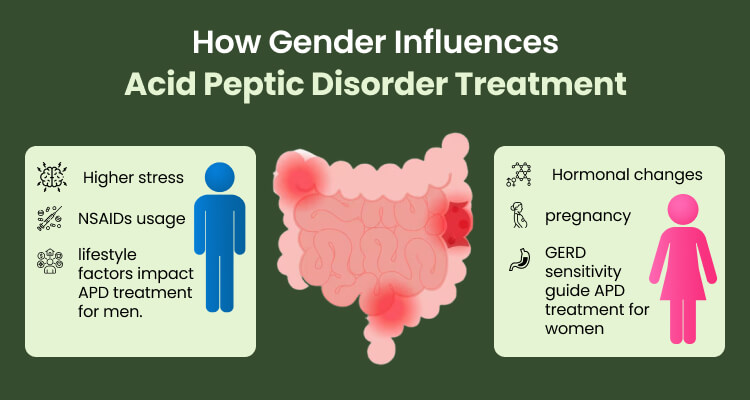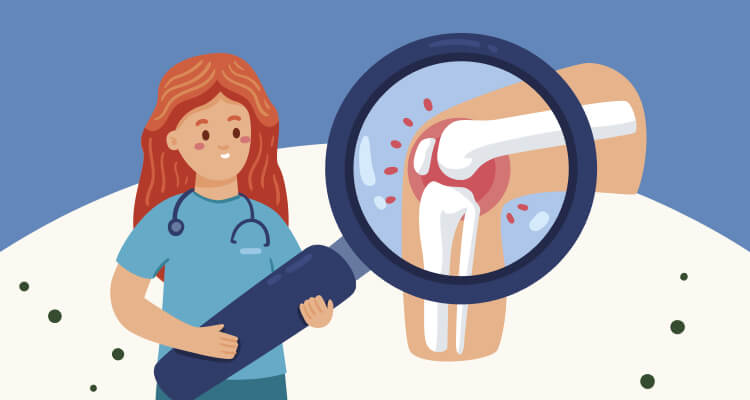What You’ll Learn in this Blog
- The best foods to include in your diet.
- Easy and tasty ways to add these essential foods into your daily meals.
- How to use the Plate Method to make balanced meals that can help manage blood sugar levels, including how to divide your plate for optimal nutrition.
Managing diabetes doesn’t have to feel like a chore or a never-ending list of food restrictions. With the right choices, you can enjoy flavorful meals that also help keep your blood sugar levels in check. You might even be surprised at how simple it can be to make small changes that lead to big results.
One of our 25 health experts, Nikhila Hiremath, a licensed ayurvedic doctor in India is here to guide you on the journey to effective diabetes management. With her extensive knowledge of holistic health and nutrition, she identifies the top foods you should include in your diet to maintain optimal blood sugar levels.
Let’s explore the foods that form the foundation of a diabetes-friendly diet and how they can benefit your health.
Non-Starchy Vegetables: Low-Carb and Nutritious
Non-starchy vegetables are low in carbohydrates and rich in essential nutrients, making them a valuable addition to a diabetes-friendly diet. These vegetables have a minimal impact on blood sugar levels due to their low glycemic index and high fiber content, which helps regulate blood sugar by slowing sugar absorption. Also, they are packed with vitamins, minerals, and antioxidants that support overall health.
In Ayurveda, their light, dry, and bitter qualities aid in managing diabetes by stabilizing blood sugar, hydrating the body, and supporting liver function and digestion. Regular intake may even lower fasting blood sugar levels.
What to Eat
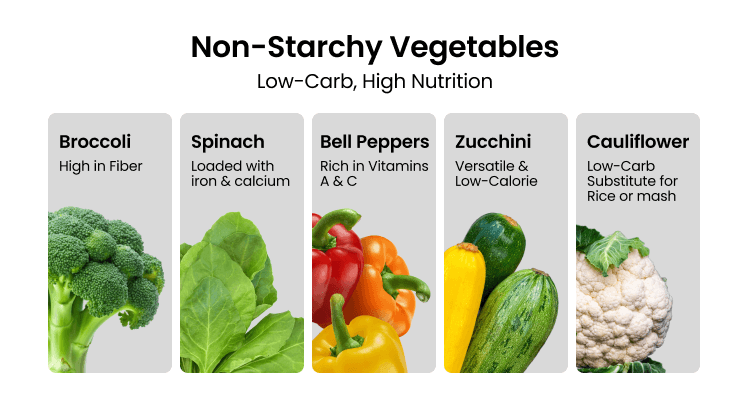
- Leafy Greens: Spinach, kale, and Swiss chard are packed with vitamins and minerals and are extremely low in carbs.
- Broccoli: This cruciferous vegetable is high in fiber and vitamins and has a low glycemic index, making it a perfect choice for blood sugar management.
- Bell Peppers: Rich in vitamins A and C, bell peppers add crunch and color to your meals and have a minimal impact on blood sugar.
Quick Meals to Include Them In Your Diet
- Make a large salad with at least three leafy greens, topped with a grilled chicken breast and a light vinaigrette.
- Steam broccoli and serve as a side dish with your favorite protein.
- Add sliced bell peppers to your stir-fries, or enjoy them as a crunchy snack with hummus.
Whole Grains: The Fiber-Rich Choice
Whole grains are an excellent source of fiber, which plays a crucial role in slowing the absorption of sugar into the bloodstream and helps prevent sudden spikes in blood sugar levels. In addition to their fiber content, whole grains are packed with essential nutrients such as vitamin B complex, which supports energy metabolism, and iron, which is vital for transporting oxygen throughout the body.
Whole grains and their products usually possess a sweet, astringent taste and cooling potency. They have a special “tissue scraping” effect (Lekhana action) that helps reduce excess tissue build-up, congestion, and blockages, particularly in binding & nourishing bioenergy (Kapha Dosha) related ailments. Despite being heavy to digest, these are drying in action and keep one satiated for a long time, curbing hunger pangs effectively.
What to Eat
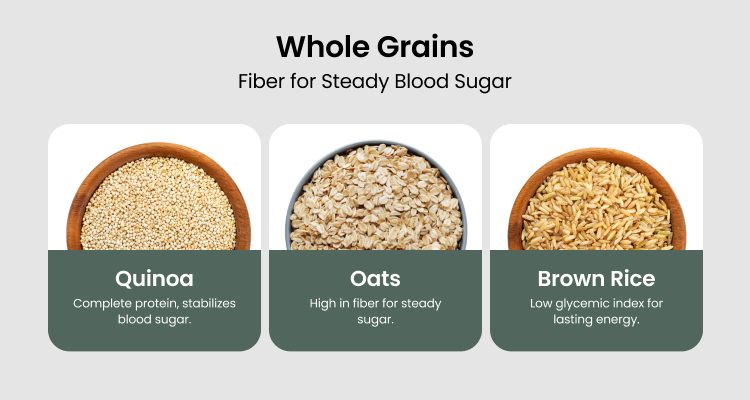
- Oats: Choose steel-cut or old-fashioned oats for a heart-healthy breakfast. Rich in soluble fiber, they not only help manage blood sugar levels but also provide about 15% of your daily iron requirement. Oats are easy to prepare and can be topped with nuts, seeds, or fruit for a nutritious start to your day.
- Quinoa: This nutrient-dense grain is high in both protein and fiber, making it a great alternative to refined grains. Quinoa is also a great source of iron, providing around 35% of your daily requirement in a single serving. Its versatility makes it a perfect addition to salads, soups, or as a side dish.
- Brown Rice: Opt for brown rice instead of white rice. It has a lower glycemic index and is rich in fiber, both of which aid in blood sugar regulation. While brown rice isn’t as high in iron as quinoa, it’s still a healthier choice when you want to maintain balanced blood sugar levels.
Quick Meals to Include Them In Your Diet
- Begin your day with a bowl of oatmeal, topped with fresh berries and a sprinkle of chia seeds.
- Go for a quinoa salad with mixed vegetables and lean protein for a satisfying lunch.
- Use brown rice as a base for stir-fries or pair it with your favorite protein and veggies for dinner.
Legumes: Fiber-Packed and Filling
Legumes, such as lentils, chickpeas, and black beans, are a powerhouse of nutrition, offering numerous benefits for a diabetes-friendly diet. Rich in protein and fiber, legumes help support muscle maintenance and digestive health, while their low glycemic index helps stabilize blood sugar levels by promoting gradual sugar absorption.
Legumes are considered wholesome foods. They absorb excess liquid in the gut (Grahi) and help strengthen and nourish the body, providing a satisfying effect while supporting healthy digestion (Agni). These qualities make them beneficial for managing diabetes. Additionally, legumes are packed with essential vitamins and minerals, including iron, magnesium, and folate. Legumes enhance your nutrient intake, keep you feeling full longer, and contribute to better blood sugar control.
What to Eat
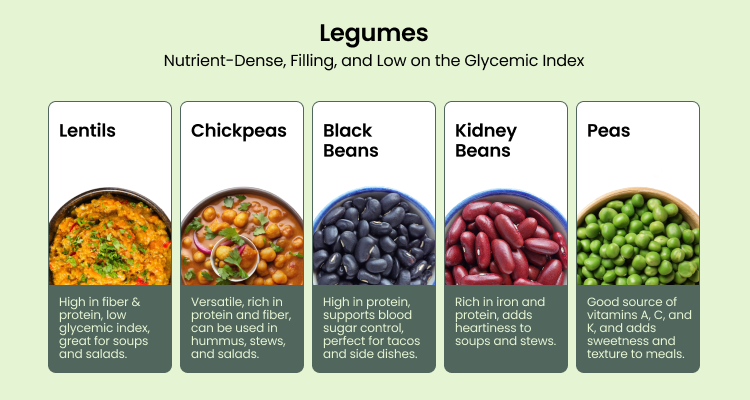
- Lentils: High in fiber and protein, lentils have a low glycemic index and are great for soups, stews, or salads.
- Chickpeas: Versatile and nutritious, chickpeas can be used in salads, soups, or as the base for hummus.
- Black Beans: Rich in fiber and protein, black beans are a great addition to various dishes and have a lower impact on blood sugar compared to other carb sources.
Quick Meals to Include Them In Your Diet
- Prepare a nourishing lentil soup with a mix of vegetables and spices.
- Prepare a chickpea salad with fresh vegetables and a lemon-tahini dressing.
- Use black beans in tacos, salads, or as a side dish.
Lean Proteins: Building Blocks for Health
Lean proteins are vital building blocks for maintaining and repairing tissues and play a key role in overall health. These proteins include options such as skinless chicken, fish, and tofu that provide essential amino acids without the added fat and calories, found in higher-fat meats like, pork, beef, chicken wings with skin, etc.
Lean proteins help keep you full and satisfied, which can aid in managing weight and controlling blood sugar levels. They also support muscle health and metabolic functions, contributing to a balanced and nutritious diet.
What to Eat
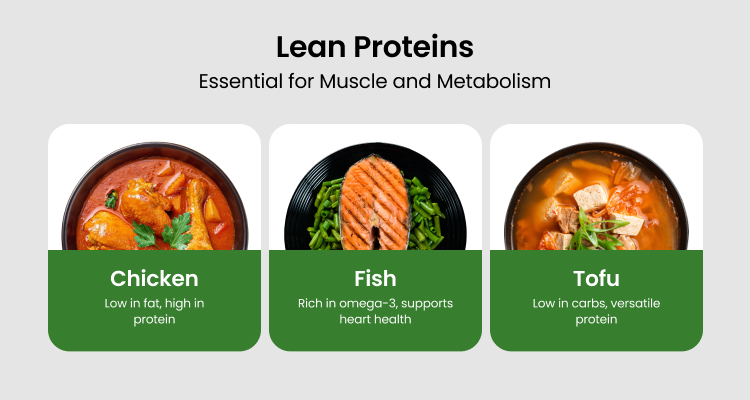
- Chicken: Skinless chicken breast is low in fat and a good source of protein.
- Fish: Salmon, mackerel, and sardines are abundant in omega-3 fatty acids and protein. Omega-3 can help reduce inflammation and support heart health.
- Tofu: It’s a versatile plant-based protein that is low in carbs and can be used in a variety of dishes.
- Meat: It is nourishing, strengthening, and particularly beneficial for managing Vata-related imbalances (the bioenergy of transportation/conduction), supporting energy and stability.
Quick Meals to Include Them In Your Diet
- Grill or bake chicken breasts and serve them with steamed vegetables.
- Add salmon to your weekly meal plan, whether baked, grilled, or poached.
- Use tofu in stir-fries, salads, or as a substitute for meat in various recipes.
Healthy Fats: Supporting Heart Health
Healthy fats are an essential part of a balanced diet and offer numerous benefits for overall health. These fats are found in foods like avocados, nuts, seeds, and olive oil, providing a rich source of monounsaturated and polyunsaturated fats. They support heart health by improving cholesterol levels and reducing inflammation. Additionally, healthy fats aid in the absorption of fat-soluble vitamins (A, D, E, and K) and contribute to satiety, helping you feel full longer and manage your appetite
What to Eat
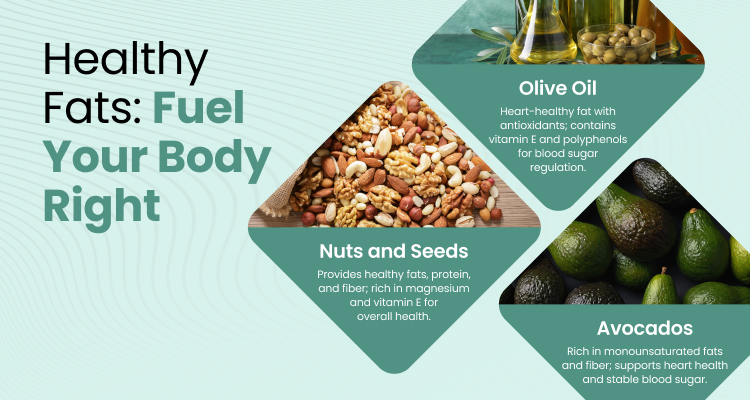
Ghee : Ghee, sourced from cow’s milk is an excellent rejuvenating agent. It is nourishing and calming and helps pacify Vata (The Bioenergy of transportation/conduction), and Pitta (Transformative Bioenergy) and increases Kapha Dosha (Binding & Nourishing Bioenergy) which is needed for good sleep and relaxation. Ghee improves sleep, brain function, energy, and digestion.
Avocados: Rich in monounsaturated fats and fiber, avocados can help improve blood sugar control and provide a creamy texture to meals.
Nuts and Seeds: Almonds, walnuts, chia seeds, and flaxseeds offer healthy fats and protein while being low in carbs.
Olive Oil: Extra virgin olive oil is a heart-healthy fat that can be used in cooking or as a salad dressing.
Quick Meals to Include Them In Your Diet
- Add sliced avocado to your salads or spread it on whole-grain toast.
- Snack on a small handful of nuts or sprinkle seeds on your yogurt or oatmeal.
- Use olive oil to sauté vegetables or as a base for homemade salad dressings.
Low-Fat Dairy: Calcium-Rich Options
Low-fat dairy products are a great addition to a balanced diet, providing essential nutrients while minimizing added fat and calories. Options like skim milk and reduced-fat cheese offer a good source of calcium and vitamin D, which are crucial for bone health. They also deliver high-quality protein that supports muscle maintenance and overall bodily functions. Low-fat dairy helps to manage calorie intake and maintain a healthy weight while benefiting from the vital nutrients that support overall health.
What to Eat
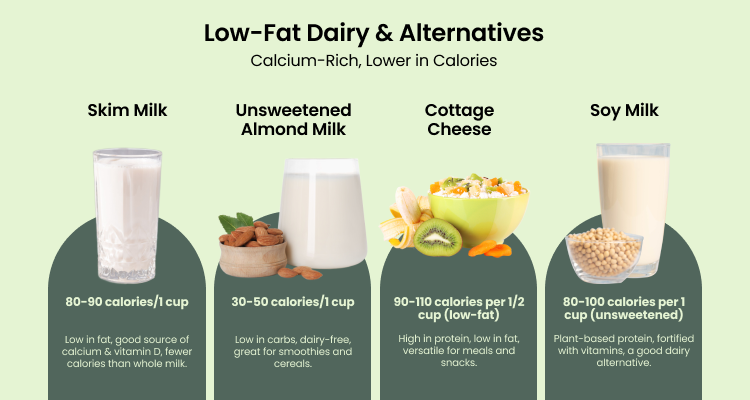
- Skim Milk: Provides calcium and vitamin D without the extra calories and fat.
- Unsweetened Almond Milk: A good dairy-free alternative low in carbs and can be used in cooking or baking.
- Soy Milk: A plant-based alternative rich in protein, calcium, and vitamin D, with a low glycemic index, making it a good choice for people with diabetes.
- Cottage Cheese: A low-carb, high-protein dairy option that can help manage blood sugar levels. Choose low-fat or fat-free varieties for a healthier option and pair with vegetables or whole grains for balanced meals.
Quick Meals to Include Them In Your Diet
Use skim milk in your morning coffee or with your cereal.
Add unsweetened almond milk to smoothies or use it in cooking.
Spices: Nutrient-Rich Additions to Your Diet
Spices like fenugreek seeds, cinnamon, and ginger can help manage blood sugar levels through their unique properties. Fenugreek seeds offer soluble fiber that slows carbohydrate absorption, cinnamon improves insulin sensitivity, and ginger’s anti-inflammatory effects support overall glucose regulation. Incorporating these spices into your diet can enhance blood sugar control and overall health.
Superfoods for Diabetes as per Ayurveda
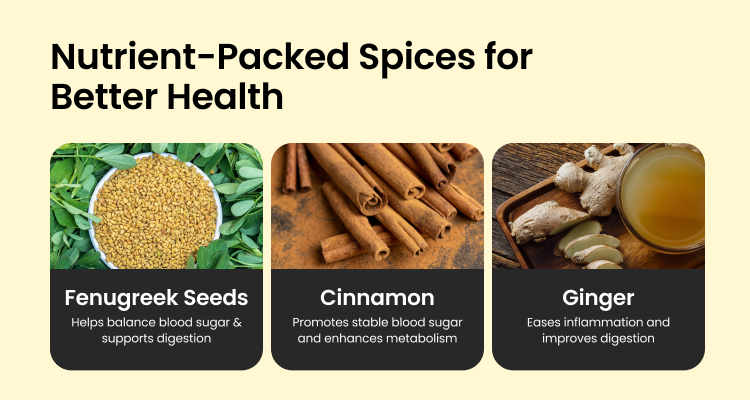
- Bitter Melon: This vegetable is renowned for its ability to lower blood sugar levels. It can be included in stir-fries with more vegetables or consumed as a juice.
- Fenugreek: Known for its blood sugar-regulating properties, fenugreek seeds can be added to salads or used as a powder in cooking.
- Turmeric: With its powerful anti-inflammatory benefits, turmeric enhances curries, soups, and smoothies. Try golden turmeric curry made with turmeric, vegetables, and lean proteins, perfect for a healthful meal.
- Indian Gooseberry (Amla): Supports kidney health and boosts immunity. Blend Indian gooseberry with water and a touch of honey for a revitalizing drink.
- Pomegranate: Loaded with antioxidants, pomegranate seeds are perfect for salads or as a nutritious snack.
Holistic Approach for Balanced Diabetes Management
Managing diabetes requires more than just monitoring blood sugar levels; it calls for a holistic approach that incorporates mindful eating, physical activity, and emotional well-being. By embracing the principles of Ayurveda, you can create a balanced lifestyle that nurtures both your body and mind.
Live Your Best Life (LYBL) helps transform your relationship with food, guiding you toward a good diet and helping you build a sustainable, healthy lifestyle that lasts. The diabetes diet at LYBL offers diverse food choices, focusing on whole grains, non-starchy vegetables, and lean proteins. Even better, unlike many restrictive diets, it doesn’t cut out any tasty options. Instead, it advocates for a balanced approach to nutrition
.
Remember, small, consistent changes can lead to significant improvements over time, allowing you to thrive while living with diabetes.
Get in touch with us to get personalized guidance on your diabetes management.

